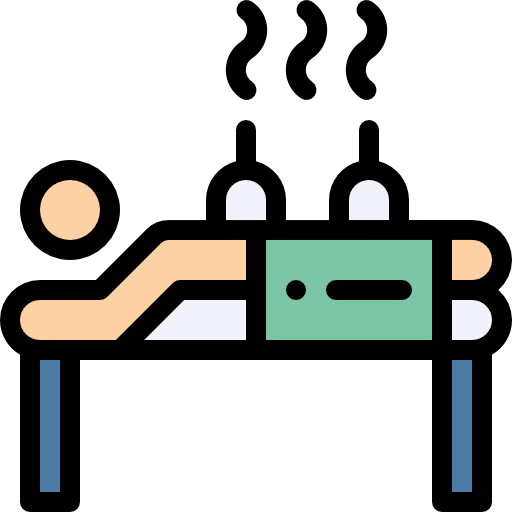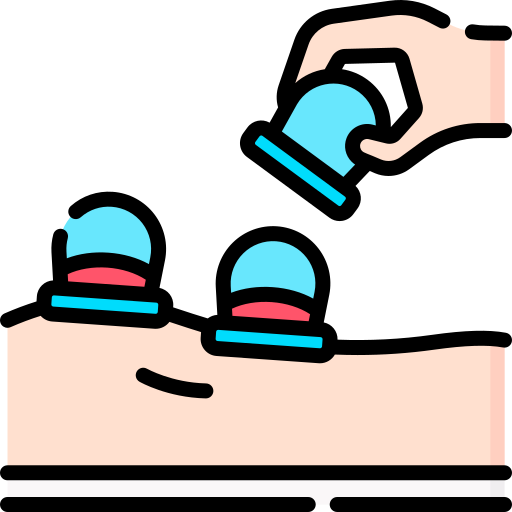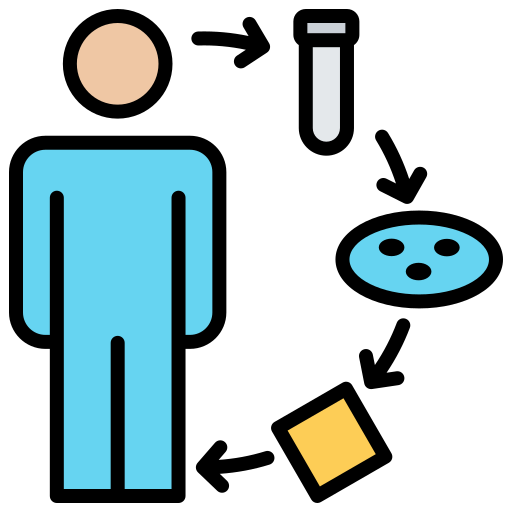About

What is Wet Cupping Therapy (WCT)?
Wet cupping therapy is a form of cupping therapy that involves blood-let-out. Unlike dry cupping, wet cupping can be used to definitively resolve health issues.

What Does The Therapy Involve?
The purpose is :
- Application of suction cups on the body and superficial skin scratching
- Removal of toxins and lost blood cells from the tissues.

What Is The Purpose Of Toxin Removal?
The therapy involves :
- Disease prevention (prophylaxis) and/or
- Disease treatment (potential resolution)

Meet Your Therapist
Hi, I’m Ibrahim (Abraham/Ibby) – a certified wet cupping therapist with 5.5 years of clinical experience.

Background
I studied molecular genetics at university and have worked in laboratories from different industries post-graduation. I’ve changed track to professionally practice to Wet Cupping Therapy to clinically help people with their health problems.

A Ballarat First!
I founded Wet Cupping Therapy to bring Ballarat a scientifically grounded, transformative treatment for pain, inflammation, and chronic conditions.
Why Choose My Clinic?

Ballarat’s first dedicated wet cupping service.

Biomedical approach – blending traditional therapy with modern science.

Personalized care for prevention and symptom relief.
Pricing
Starting from $70.
We’re available every day of the week, including public holidays, from 10:00 AM to 11:00 PM
Who Can Benefit From Wet Cupping Therapy?
Summary of General Potential Benefits
- Detoxification
- Pain relief/reduction
- Anti-inflammation
- Muscle relaxation/invigoration
- Relieve tension/stress
- Improved range of movement and flexibility
- Improved systemic functions
- Improved circulation
- Improved sleep
- Improved immunity
Summary of Potential Clinical Benefits
- Activation of the local, general circulation and micro-capillary circulation due to histamine release brought on by skin scratching which ultimately leads to vasodilation and therefore more blood flow to a specific region of the body.
- Activation of the local, general circulation and micro-capillary circulation due to liberation of endothelial-derived nitric oxide caused by the shear stress of repeated suction.
- Sero-clearance (clearance of the circulation) of its undesired old blood elements via a selective pooling of the circulation in a localised body sector due to histamine release – combined with – localised micro-capillary dilatation caused by nitric oxide liberation.
- Guarding against vascular accidents by eliminating old red blood elements that could result in unnecessary haemoconcentration.
- Percutaneous removal of abnormal red blood cells, inflammatory mediators, heavy metals, and toxins etc. Refer to comprehensive list of causative pathological substances below.
- Support to the integrity of micro-capillaries and correction of any existing micro-capillary compromise via elimination of accumulated inflammatory tissue mediators that cause micro-capillary spasms.
- Promote capillary endothelial cell repair, and accelerate granulation and angiogenesis in the regional tissues,
- Improving local capillary vascular blood flow, lymphatic and capillary microcirculation
- Eliminating occlusions from the micro-circulatory system and the lymphatic ducts (part of the greater lymphatic system)
- Protection against diabetic complications of the heart, legs, feet or kidneys by eliminating toxic metabolic mediators.
- Guarding against chronic illness and cancer via elimination of acidic inflammatory mediators and potentially treating existing micro-capillary compromise which forms the hidden basis for chronic, major illness and cancer.
- Augmentation of the body’s immunity by improving the oxygen and nutrient carrying capacity of red blood cells which is a result of sero-clearance.
- Activation of undifferentiated stem cells which is still a subject of continued research and accurate re-determination.
- Increase the parasympathetic activity and relax body muscles.
- Restore sympathovagal balance.
- Stimulate the autonomic nervous system.
- Protect cardiovascular health via stimulation of peripheral sympathetic and parasympathetic nervous system.
- Enhancing endogenous endothelial-cell-derived production of nitric oxide (vasodilator and antimicrobial)
- Stimulating the release of endogenous opioids
- Increasing number of natural killer cells
- Restoring natural activity levels of reticuloendothelial cells
- Stimulating leucocytic production of interferon
- Enhancing immunostimulatory cytokines, potentiating and facilitating therapeutic effects of drugs simultaneously administered with wet cupping therapy
- Potentiate natural antiviral immunity, eg, increasing CD4 count, CD8 count and CD4/CD8 ratio
- Potentiate the pharmacological effects of current therapeutics
- Exert tissue-protective effects
- Normalise serum liver enzymes
- Alleviate side effects of some drugs
- Improving blood saturation and tissue perfusion with oxygen
- Reduce low density lipoprotein (LDL) and triglycerides
- Reduce blood sugar levels
What Does The Blood Removed Via Wet Cupping Therapy Contain?
A Potential Combination of
- Defective red blood cells (e.g., abnormally shaped)
- Old red blood cells (spherocytes)
- Bacterial cytotoxins
- Heavy metals (e.g., aluminium, lead, mercury, and silver)
- Inflammatory mediators like cytokines (e.g., tumour necrosis factor α, interferons, interleukins, chemokines)
- Other inflammatory mediators like prostaglandins and bradykinins
- Calcitonin gene-related peptide
- Vasoactive intestinal polypeptides
- Advanced glycation end products
- Overproduced lactate
- Proteinaceous waste
- Vascular endothelial growth factors
- Exosomes
- Metalloproteinases
- Serum fluid
- Serum substance P (serum SP)
- Serum glutamic oxaloacetic transaminase and other sero-toxic enzymes
- Serum lipids
- Serum oxidants like malondialdehyde
- Excess serum ferritin
- Alpha fetoprotein
- Lipoproteins
- Viral particles, antigens, and nucleic acids
- Antigen-antibody complexes
- Free radicals e.g. reactive oxygen and nitrogen species
- Uric acid
- Other pathology-related substances
Contraindications Where One May Not Quality For Treatment
- Blood disorders such as sickle cell anaemia.
- Skin disorders such as contagious skin diseases, serious skin allergies, or irritation.
- Trauma and fractures.
- Mental disorders such as phrenoplegia, manic unrest, tetanus, rabies, and other convulsive diseases.
- Active tuberculosis, flu or COVID-19.
- Being drunk, under the influence of substances, hungry, agitated, overtired or weak.
- Pregnancy,
- Hypotension, open wounds, surgical wounds and high fever.
- People less than 18 years of age.
- Extreme weakness or frailty.
- Low blood pressure.
Before, During & After Information
What does the Therapy Involve
The therapy is a 3-step process.
What are the Steps
- creating suction using suction cups
- making tiny superficial cuts (scratches) on the skin
- creating suction again using suction cups to draw out extravascular blood
Steps in Detail
- The cupping procedure starts by placing suction cups on the required areas of the skin for 3-7 minutes
- Cups are removed
- Anti-septic solution is applied on the cupping sites for 1 minute to kill off skin-dwelling microbes
- Tiny superficial cuts (scratches) are made on the skin using a sterile blade
- Cups are re-applied and repeat suction is employed. This in turn results in accumulation of blood inside the cups.

